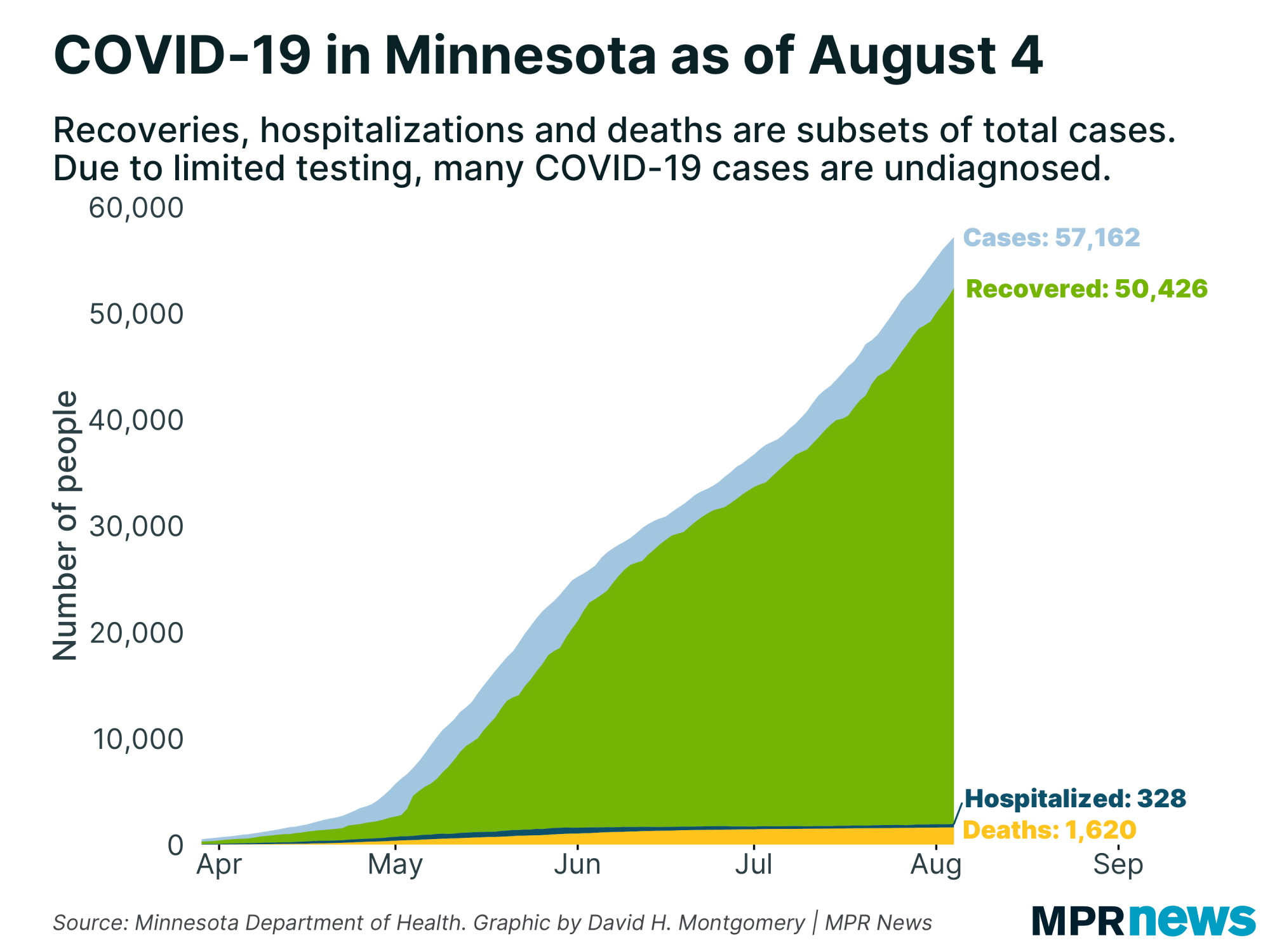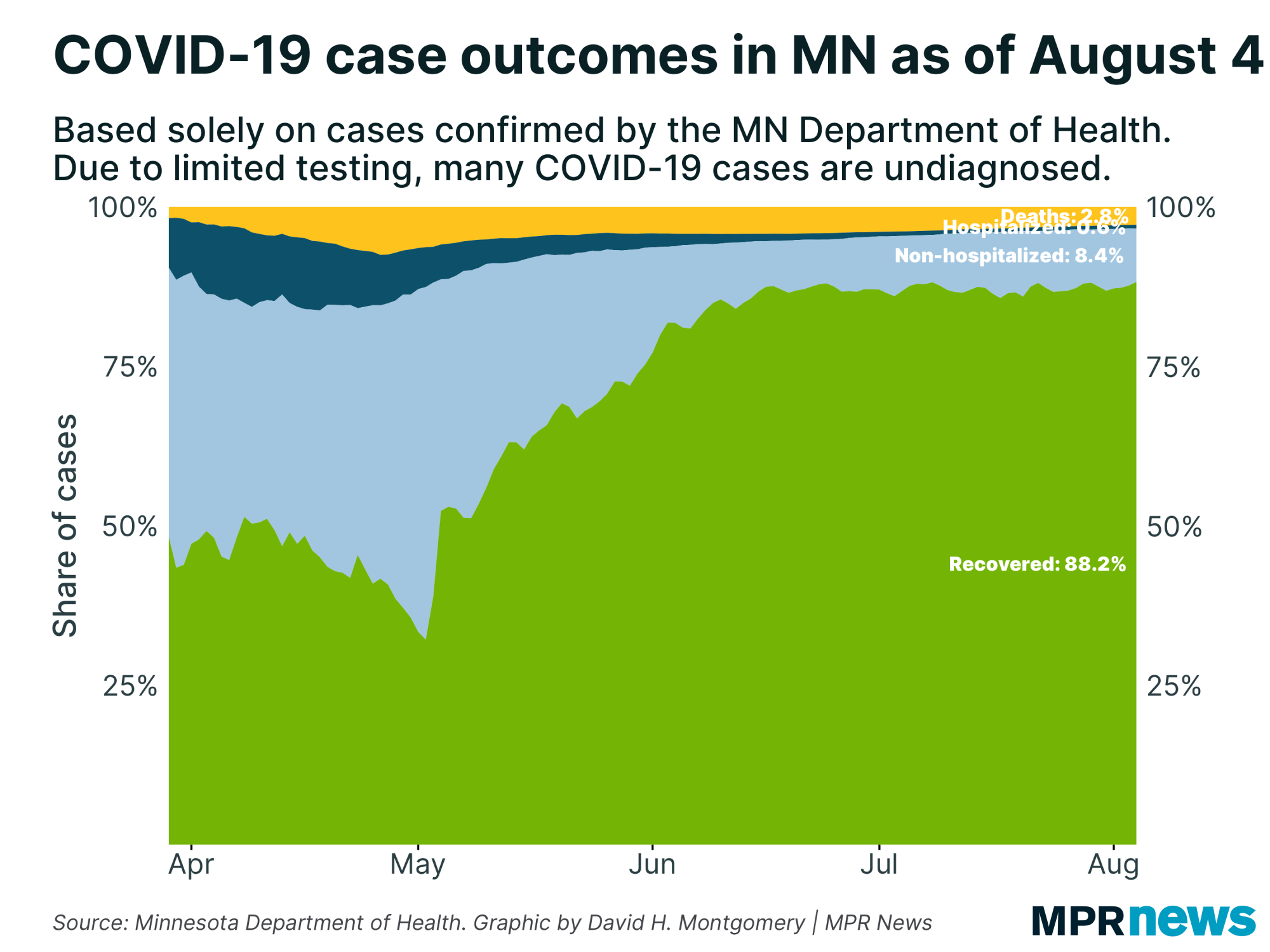April 17 update on COVID-19 in MN: Deaths rise to 111; Walz eases some outdoor curbs

Go Deeper.
Create an account or log in to save stories.
Like this?
Thanks for liking this story! We have added it to a list of your favorite stories.
Updated 7:55 p.m.
Gov. Tim Walz mixed optimism with vigilance Friday, urging Minnesotans to enjoy more outdoor activities but warning against a false sense of security about the disease as he confirmed new cases tied to a massive pork processing plant in southwestern Minnesota.
At an afternoon briefing Friday, Walz and state health experts said Minnesota’s stay-home efforts had pushed back the disease’s peak, buying time to prepare for a surge of hospitalizations now expected in the summer.
But as he announced the easing of stay-home orders Friday to allow golfing, boating and other outdoor activities, he pleaded with Minnesotans to not let their guard down in the good weather.
"We've done so well and that might be a double-edged sword for us,” the governor said. “I'm just afraid people are ready to bust out and this thing spikes up.”
Turn Up Your Support
MPR News helps you turn down the noise and build shared understanding. Turn up your support for this public resource and keep trusted journalism accessible to all.
He also braced Minnesotans not to expect to see public spaces crowded with people anytime soon.
As the state works methodically to reopen the economy, "I think we all have to get used to this: In the short run I don't think we're going to see Target Field filled with people,” he said. “The things we want more than anything” — sports, big parties and crowds filling restaurants and bars — “are gonna be some of the last things that come back on,” he added.

New cases and deaths
Walz’s remarks came hours after the state Health Department reported the number of deaths tied to COVID-19 had topped 100 and total cases rose above 2,000. That startling report came minutes after Walz eased back on the state’s stay-at-home restrictions to let Minnesotans start golfing and boating.
Seventeen new deaths — the largest one-day jump since the pandemic began — brought Minnesota’s COVID-19 total to 111; 106 people remain in intensive care, up slightly from Thursday. Of 2,071 Minnesotans who’ve tested positive so far, just over half have recovered to the point where they no longer need isolation.
The closeness of the announcement on new cases and deaths and the easing of outdoor restrictions showed clearly the difficult balance officials are trying to strike as they work to manage the disease’s spread while trying to slowly return normalcy to parts of daily life.
Among the other updates Friday, the Health Department reported 73 of Minnesota's 87 counties have at least one COVID-19 case. Aitkin County was added to the list.
Among the new deaths confirmed, nine were in Hennepin County, two in Winona County and one each in St. Louis, Dakota, Nicollet, Clay, Anoka and Rice counties. It was Rice County’s first death.
Economic restart tied to big testing push
News that Minnesotans could hit the links and lakes came a day after University of Minnesota researchers say they could soon be ready to test 10,000 people daily for COVID-19, a development that could help give health experts a better understanding of the coronavirus’ true extent and lead to a reopening of the state.
Walz this week has said repeatedly that Minnesota needs a drastic increase in COVID-19 testing in the next three weeks in order to begin safely reopening the state's economy. He’s pushing for 5,000 completed tests a day by May 4, when his stay-at-home order is set to expire. That’s about four times more than the average testing happening this week.
The governor said he was excited about efforts by the U and Mayo Clinic and that he’d spoken with Senate Majority Leader Paul Gazelka, R-East Gull Lake, about funding and that lawmakers are “very much aligned” on the need to boost testing.
The U of M is asking the Legislature for $20 million to ramp up its testing efforts. Researchers at the school started from scratch to build a testing regimen that wouldn’t suffer from current supply shortages.
“Our partners have stepped up on this," Walz added. “There isn't really a holdup.”

SW Minnesota worries
Officials continue to caution the virus is much more widespread than what the daily updates indicate and reaching deeper than the Twin Cities metro area.

In Nobles County in southwestern Minnesota, officials announced late Thursday night that the number of people who have tested positive for the coronavirus had jumped.
Officials have been increasingly concerned about counties in that part of the state given the major outbreak of the disease at the Smithfield Foods pork processing plant in Sioux Falls, S.D., near the Minnesota border.
The Smithfield plant is now shut down, raising fears now in Nobles County about the JBS pork processing plant, Worthington’s largest employer with a workforce of more than 2,000.
Walz on Friday afternoon confirmed that cases have surfaced at the massive plant but that at this point the operation is still running. The union representing workers at the JBS plant say 19 employees have tested positive for COVID-19 and have called on executives to slow down production so that workers can maintain safe social distancing.
State Health Commissioner Jan Malcolm said there are about 30 confirmed cases in the Worthington area now, with about seven tied to JBS. Officials expect that number to climb. "We know there is spread in the community now, so this needs to be a community response," Malcolm said.
Minnesota officials and executives are working closely, Walz said, noting that there are workers with family ties to both plants, which likely promoted the spread of the disease.
Political tension
While Republicans and Democrats have been fairly united in the state’s response to COVID-19, political rifts are continuing to grow. Republican House Minority Leader Kurt Daudt this week argued that the state needed to tailor restrictions to those at higher risk and "allow the rest of us to go back to work."
That tension was compounded Friday as President Trump effectively called on people to defy Walz’s stay-at-home order, tweeting “Liberate Minnesota!”
An afternoon crowd gathered outside the governor’s residence in St. Paul to protest the restrictions on daily life and the economic toll they’ve taken on businesses that have been forced to close and people who’ve been thrown out of work.
Speaking to AARP members on a call, Walz said that as a member of the National Guard, he’s fought to preserve American freedoms, including freedom of assembly, but that the crowd of protesters was putting people at risk of the disease, including health care workers battling COVID-19 daily.
“They’re not protesting me,” Walz said. “They’re protesting the idea that we have to protect these front-line workers.”
Later Friday, Walz said he attempted to call Trump without success about his tweet. "I just don't have time to try to figure out why something like that would happen,” he said. “I just have to lead from Minnesota's perspective."
Developments from around the state
Metro Transit suspends all overnight light rail service
Metro Transit says it will suspend nighttime light rail service beginning Saturday morning. The transit agency said on Thursday that Green and Blue lines will stop for the night at 9 p.m. and start again at 6 a.m.
The Blue Line between Terminal 1 and Terminal 2 at the Minneapolis-St. Paul International Airport will continue running overnight.
— MPR News staff
Majority of MN child care providers wait on 'not nearly enough' state funding
Nearly 70 percent of Minnesota's child care providers have applied for state grants available through the COVID-19 rescue plan.
Child Care Aware of Minnesota is administering $30 million in funding that the Legislature approved last month. At a House committee hearing Thursday, executive director Ann McCully said the organization received 6,000 applicants — but there is only funding for just over 1,000 of them.
"There is just so much need out there, even when we try to zero in on helping our essential workers," she said. "We are excited to be able to at least help those programs that will receive grants, but we know it will not be nearly enough."
The child care industry has been hit hard by the pandemic. Many child care providers have closed as more families stay home with their children. Some providers are concerned they may not be able to reopen.
— Riham Feshir | MPR News
Jobless report shows ‘leading edge’ of virus’ impact
It’ll be another month before the massive layoffs due to COVID-19 are reflected in Minnesota’s unemployment figures.
On Thursday, the state reported the seasonally adjusted unemployment rate for March remained at 3.1 percent, unchanged from February. The statistics were gathered before a wave of layoffs began in the middle of March.
More than 450,000 people have applied for unemployment assistance since March 16. Thursday’s report shows only “the leading edge” of coronavirus unemployment impact, said Steve Grove, commissioner of the Department of Employment and Economic Development.
The report for April, which is due on May 21, will capture the brunt of the employment downturn. Even before that, the state says the labor force had shrunk by 48,000 people between February and March in a workforce pool that was slightly below 3 million people. Nationally, the unemployment rate for March was 4.4 percent.
— Brian Bakst | MPR News
Top headlines
Walz signs bill to allow beer and wine takeout sales: Under the new measure that takes effect this Saturday, customers can purchase one bottle of wine or up to a six-pack of beer, cider or hard seltzer with their food. Other alcoholic beverages are not included.
A look at the data that’s helping Minnesota plan its COVID-19 response: Gov. Tim Walz and other state officials are using a model from the Minnesota Department of Health and the University of Minnesota to predict the health impacts of COVID-19. But with data so uncertain, the model doesn’t predict one future so much as many. Researchers shared data from 100 of their thousands of simulations with MPR News — a randomly chosen 50 simulations from two specific scenarios.
7 Midwest states to partner on reopening the economy: Seven Midwestern governors, including Minnesota Gov. Tim Walz, announced Thursday that they will coordinate on reopening their state economies, after similar pacts were made in the Northeast and on the West Coast. The latest agreement includes Minnesota, Illinois, Ohio, Michigan, Indiana, Wisconsin and Kentucky.
Caregivers try to maintain routines in an abnormal time: Caring for those with dementia can be an all-consuming and isolating job. But in the era of the coronavirus, it has become even more difficult.
COVID-19 in Minnesota
Health officials for weeks have been increasingly raising the alarm over the spread of the novel coronavirus in the United States. The disease is transmitted through respiratory droplets, coughs and sneezes, similar to the way the flu can spread.
Government and medical leaders are urging people to wash their hands frequently and well, refrain from touching their faces, cover their coughs, disinfect surfaces and avoid large crowds, all in an effort to curb the virus’ rapid spread.
The state of Minnesota has temporarily closed schools, while administrators work to determine next steps, and is requiring a temporary closure of all in-person dining at restaurants, bars and coffee shops, as well as theaters, gyms, yoga studios and other spaces in which people congregate in close proximity.


